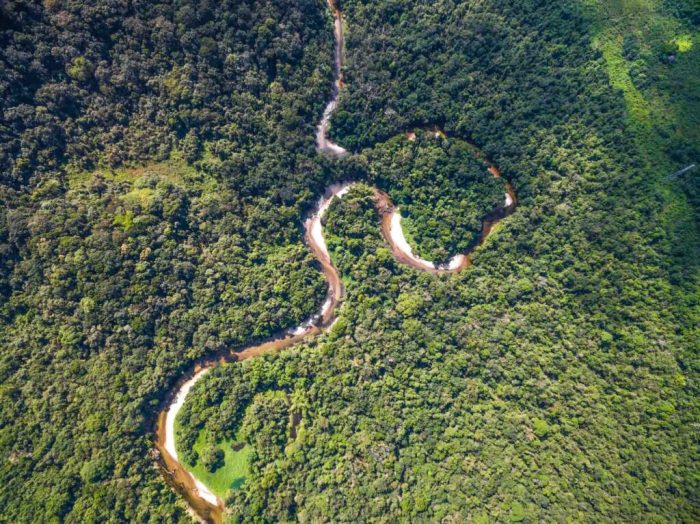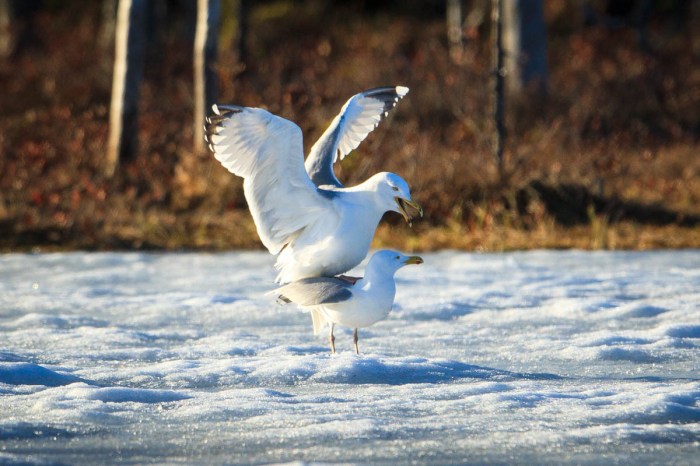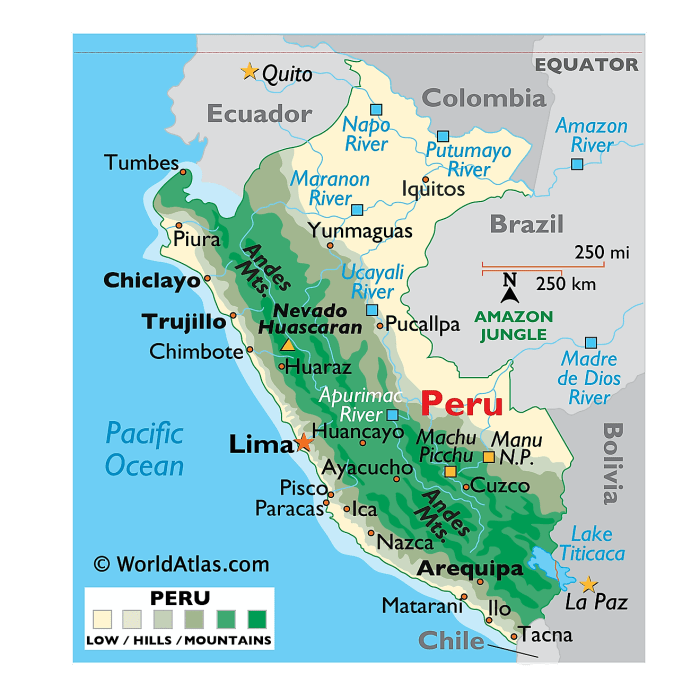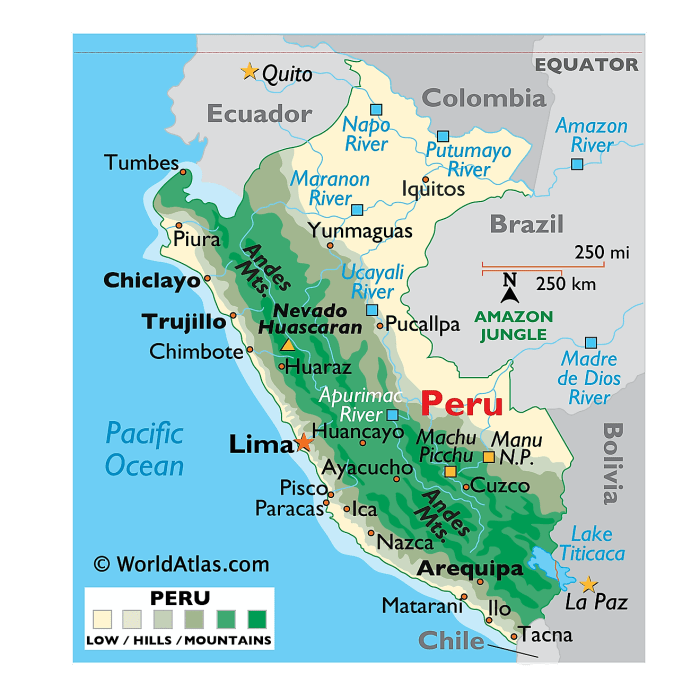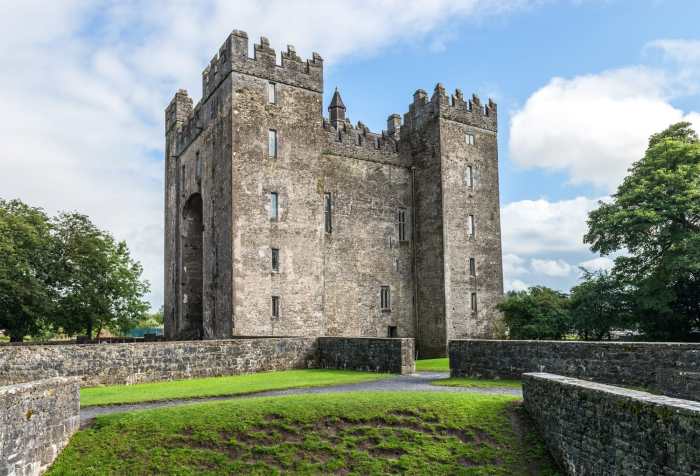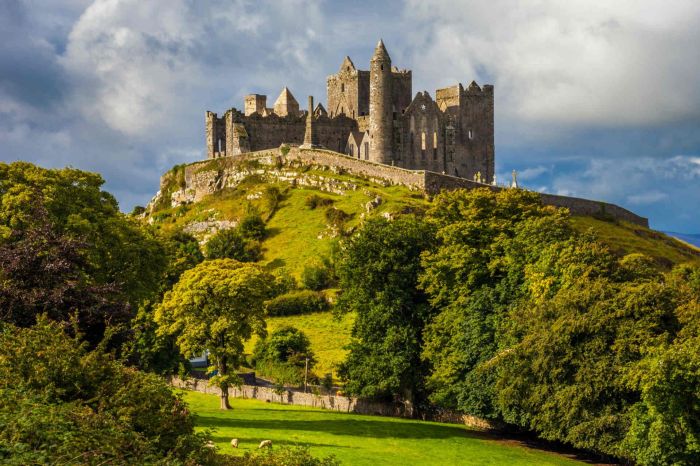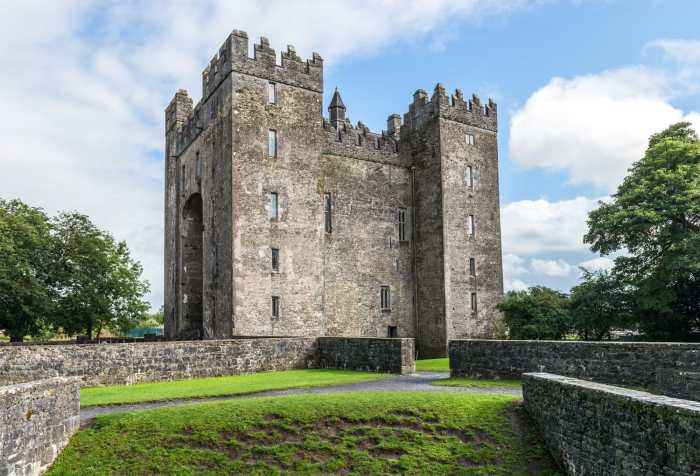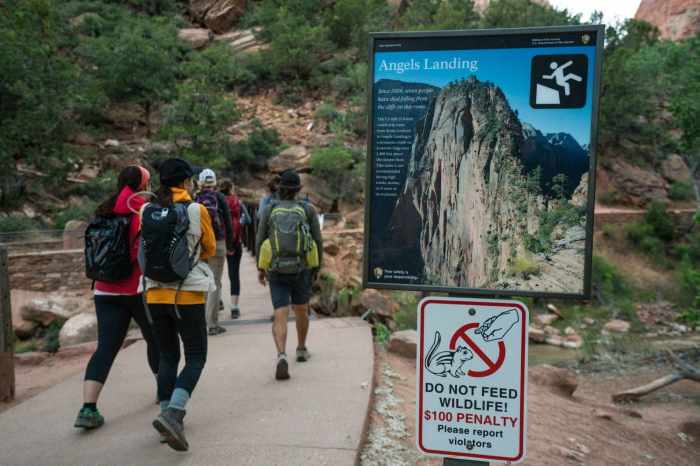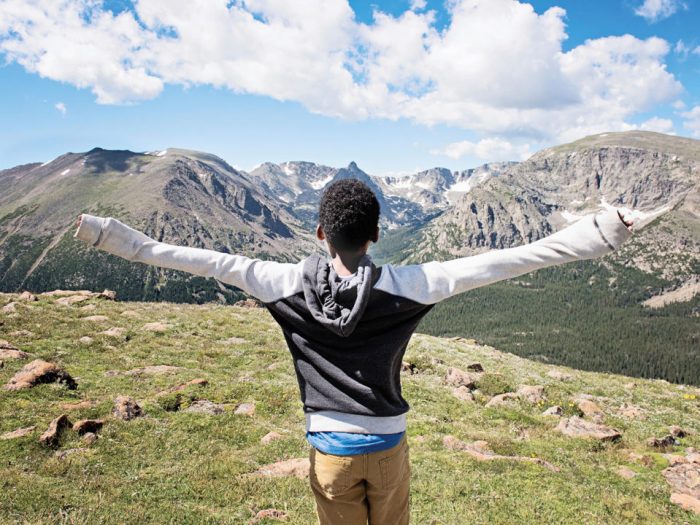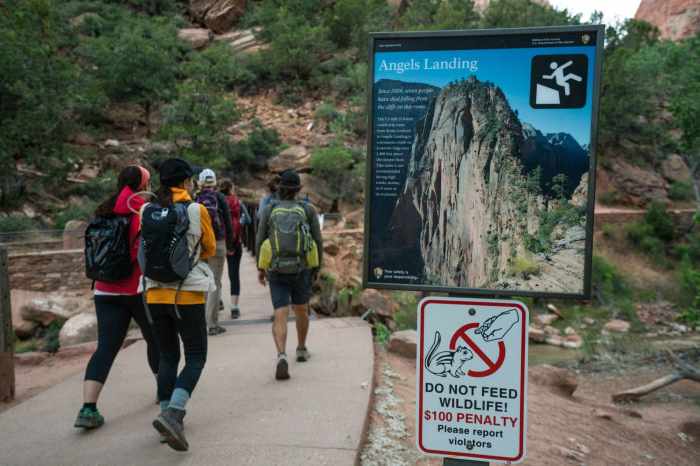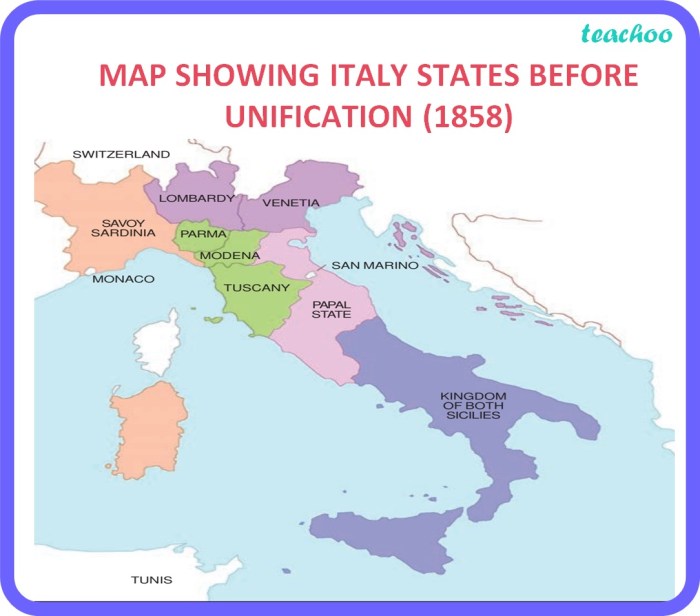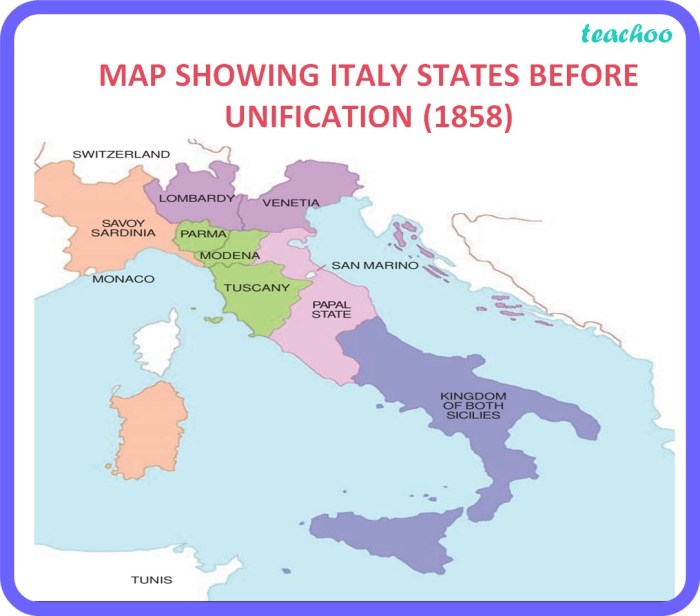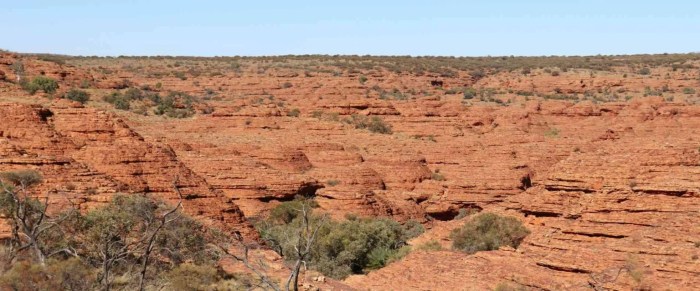Best places to visit in Brazil, a land of vibrant culture, stunning landscapes, and thrilling adventures! From sun-drenched beaches to lush rainforests, and historical cities to bustling metropolises, Brazil offers a diverse array of experiences for every type of traveler. This comprehensive guide delves into the must-see destinations, highlighting the unique features, local cultures, and activities that await you on your Brazilian journey.
This guide provides an in-depth look at the best destinations in Brazil, considering factors like the best time to visit, local customs, and sustainable tourism practices. We’ll explore the vibrant cities, stunning natural wonders, and unique experiences that make Brazil a truly unforgettable travel destination.
Introduction to Brazil’s Tourism
Brazil, a land of vibrant culture, stunning natural beauty, and captivating history, has become a global tourism hotspot. From the Amazon rainforest’s untamed wilderness to the sun-drenched beaches of Rio de Janeiro, the country offers a diverse range of experiences for every traveler. This rich tapestry of attractions has drawn millions of visitors each year, transforming Brazil into a significant player in the global tourism market.Brazil’s appeal extends far beyond its iconic landmarks.
The country’s unique blend of history, culture, and nature creates a compelling narrative for travelers seeking adventure, relaxation, or cultural immersion. The sheer variety of tourist offerings, combined with the warm hospitality of its people, has cemented Brazil’s position as a top destination for both domestic and international visitors.
Historical Overview of Brazilian Tourism
The history of tourism in Brazil is intertwined with the country’s own development. Initially, tourism was largely confined to the elite, with trips focused on exploring the country’s natural resources and historical sites. The growth of infrastructure, including roads, airports, and hotels, gradually opened up Brazil to a wider range of visitors. As Brazil’s economy and infrastructure matured, tourism became a significant contributor to the national economy, with various governments recognizing its importance.
This evolution from a niche activity to a major industry reflects Brazil’s changing global role.
Major Factors Contributing to Brazil’s Popularity
Several factors have contributed to Brazil’s rising popularity as a tourist destination. A significant draw is the country’s breathtaking natural landscapes, ranging from the Amazon rainforest to the beaches of the Atlantic coast. The diverse ecosystems provide opportunities for ecotourism and adventure activities. Brazil’s rich cultural heritage, including its indigenous traditions, colonial history, and vibrant modern cities, further enhances its appeal.
Furthermore, the welcoming nature of Brazilians and the country’s excellent infrastructure, including transportation networks and accommodation options, are key factors.
Types of Tourism in Brazil
Brazil caters to a wide range of tourist interests, offering various experiences.
- Beach Tourism: Brazil’s extensive coastline boasts some of the most beautiful beaches in the world. Destinations like Rio de Janeiro, with its iconic Copacabana and Ipanema beaches, and the vibrant beaches of Salvador, Bahia, attract sun-seekers and water sports enthusiasts. The variety of beaches, from bustling urban destinations to secluded coves, caters to diverse preferences.
- Adventure Tourism: Brazil’s diverse landscapes, from the Amazon rainforest to the Pantanal wetlands, provide ample opportunities for adventure activities. Visitors can engage in activities such as jungle trekking, wildlife spotting, river rafting, and canyoning. The challenging and exciting activities appeal to a wide demographic, including thrill-seekers and nature enthusiasts.
- Cultural Tourism: Brazil’s rich history and culture offer captivating experiences. Visitors can explore historical landmarks, museums, and vibrant cultural events. From the colonial architecture of Ouro Preto to the bustling markets of São Paulo, there’s a wealth of cultural attractions to discover.
- Ecotourism: Brazil is a global leader in ecotourism. The country’s commitment to conservation and sustainable tourism practices makes it an ideal destination for nature lovers who want to experience the country’s pristine ecosystems responsibly.
Diverse Tourist Destinations
Brazil’s attractions extend far beyond the popular destinations. The country offers a multitude of options, including lesser-known but equally captivating destinations. From the historical cities of Minas Gerais to the indigenous communities of the Amazon, each region offers a unique and authentic experience. Brazil’s vastness and diversity ensure there is a place for everyone, regardless of their interests.
Brazil boasts some incredible destinations, from the vibrant beaches of Rio to the lush Amazon rainforest. But if you’re looking for a stunning hike with incredible views, consider checking out Mount Takao in Tokyo. Mount Takao hike Tokyo offers a peaceful escape amidst the bustling city, and it’s a fantastic experience. Brazil, with its diverse landscapes and rich culture, remains a top choice for any traveler seeking adventure and beauty.
Top Tourist Destinations in Brazil
Brazil, a land of vibrant culture, stunning landscapes, and diverse ecosystems, attracts millions of tourists annually. From the bustling streets of Rio de Janeiro to the Amazon rainforest’s hidden wonders, Brazil offers a unique experience for every traveler. Understanding the top destinations helps appreciate the nation’s rich tapestry of offerings.
Brazil boasts incredible destinations, from the Amazon rainforest to the vibrant beaches of Rio. But if you’re looking for a different kind of adventure, consider slow travel, like taking the train through Alberta, exploring Jasper National Park, and experiencing Edmonton. Slow travel Alberta train Jasper national park Edmonton offers a unique way to appreciate the beauty of nature and local culture, which could inspire your own trip to Brazil’s diverse landscapes.
Ultimately, the best places to visit in Brazil depend on what kind of experience you’re seeking, and there’s something for everyone!
Top 10 Most Visited Places
Brazil boasts a plethora of captivating destinations, each with its own unique charm. This list highlights ten of the most popular spots, showcasing the country’s incredible diversity.
- Rio de Janeiro: Famous for its iconic Christ the Redeemer statue, Sugarloaf Mountain, and vibrant Carnival celebrations, Rio is a must-see for any visitor. The city’s stunning beaches, like Copacabana and Ipanema, draw tourists seeking relaxation and a taste of Brazilian nightlife. The city’s bustling atmosphere and rich cultural heritage create a memorable experience.
- São Paulo: Brazil’s economic and financial heart, São Paulo offers a dynamic urban experience. The city is known for its towering skyscrapers, upscale shopping malls, and diverse culinary scene. Museums and art galleries showcase the city’s rich cultural heritage. São Paulo’s vibrant energy and cosmopolitan feel create a captivating experience for travelers seeking a bustling city experience.
- Salvador: The historical capital of Bahia, Salvador is a captivating city with a rich Afro-Brazilian culture. The Pelourinho district is a UNESCO World Heritage site, with its colorful colonial architecture and lively atmosphere. Salvador offers a unique cultural immersion, drawing tourists to experience the city’s music, dance, and food.
- Foz do Iguaçu: Home to the magnificent Iguazu Falls, a breathtaking spectacle of nature. Visitors can marvel at the immense power of the falls, with trails and viewpoints offering various perspectives. The area provides opportunities for adventure activities, such as boat tours and wildlife viewing.
- Manaus: Situated in the heart of the Amazon rainforest, Manaus offers an opportunity for an immersive jungle experience. The city serves as a gateway to the Amazon, with tours and cruises allowing visitors to explore the unique flora and fauna of the region. The opportunity to encounter exotic animals and experience the vastness of the Amazon rainforest is a significant draw.
- Fernando de Noronha: This archipelago, an oceanic paradise, offers pristine beaches, clear waters, and incredible marine life. The unique biodiversity and the opportunity for snorkeling and scuba diving are highlights. The remote location and natural beauty make it a destination for nature enthusiasts and adventure seekers.
- Rio de Janeiro (part 2): Beyond the iconic landmarks, Rio offers a variety of experiences, from hiking in the Tijuca National Park to exploring the bohemian neighborhoods. The city’s vibrant nightlife and bustling atmosphere attract tourists seeking a diverse cultural experience.
- Olinda: A historic colonial town near Recife, Olinda boasts colorful buildings, artisan workshops, and delicious street food. The city is a treasure trove of local traditions and crafts, drawing tourists interested in experiencing a traditional Brazilian town.
- Pantanal: A vast wetland area in the center-west of Brazil, Pantanal is a biodiversity hotspot, teeming with wildlife. The opportunity to observe diverse wildlife, including jaguars, caimans, and birds, is a major draw for nature lovers. The region’s untouched beauty offers an immersive experience into the natural world.
- Paraty: This charming coastal town, nestled in the state of Rio de Janeiro, is a perfect blend of history and nature. The town boasts colonial architecture, beautiful beaches, and hiking trails. The relaxed atmosphere and the opportunities for exploring the surrounding nature make it a popular destination for those seeking a tranquil getaway.
Comparing Tourist Destinations
The appeal of each destination varies significantly. Rio de Janeiro attracts tourists with its iconic landmarks and vibrant culture. São Paulo caters to those seeking a bustling urban experience. Salvador offers a cultural immersion in Afro-Brazilian traditions. Foz do Iguaçu draws visitors with the natural wonder of Iguazu Falls.
Manaus beckons with the Amazon’s incredible biodiversity. Fernando de Noronha captivates with its pristine beaches and marine life. Olinda showcases historical charm and local traditions. Pantanal beckons nature enthusiasts with wildlife spotting opportunities. Paraty offers a tranquil escape with history and nature.
Cost Comparison of Top 5 Destinations
| Name | Image Description | Brief Summary | Approximate Cost (USD per person, per day) |
|---|---|---|---|
| Rio de Janeiro | A vibrant city with iconic landmarks like Christ the Redeemer and Sugarloaf Mountain, showcasing stunning beaches and vibrant nightlife. | Iconic landmarks, beaches, nightlife, culture. | $80-$150 |
| São Paulo | A bustling metropolis with skyscrapers, shopping malls, and diverse culinary experiences. | Urban experience, diverse cuisine, shopping, museums. | $70-$120 |
| Salvador | A historical city with colorful colonial architecture, rich Afro-Brazilian culture, and vibrant nightlife. | Culture, history, music, dance, beaches. | $60-$100 |
| Foz do Iguaçu | Home to the magnificent Iguazu Falls, offering breathtaking views and opportunities for adventure activities. | Natural wonder, adventure activities, wildlife viewing. | $100-$180 |
| Manaus | A gateway to the Amazon rainforest, offering immersive jungle experiences and opportunities to observe exotic wildlife. | Amazon rainforest, wildlife, tours, cruises. | $90-$160 |
Activities and Experiences
Brazil offers a vibrant tapestry of activities, catering to diverse interests and budgets. From adrenaline-pumping adventures to serene cultural immersions, the country’s rich landscapes and vibrant culture provide an unparalleled travel experience. Whether you seek sun-drenched beaches, towering rainforests, or bustling cityscapes, Brazil has something for everyone.
Popular Activities and Experiences
Brazil’s appeal extends far beyond its stunning scenery. Numerous activities cater to various interests, from the thrill-seeking adventurer to the relaxed traveler. Experiences range from exploring historical sites to immersing in the local culture. Discovering the diverse ecosystems, meeting friendly locals, and indulging in delicious cuisine are all part of the Brazilian adventure.
Accommodation Options
A wide array of accommodation options are available to suit different preferences and budgets. Luxury hotels and resorts provide unparalleled comfort and service, while hostels offer a more budget-friendly and social atmosphere. Boutique hotels, situated in charming locations, blend local charm with modern amenities. Consider the level of service and amenities you require when choosing your accommodation.
For instance, a family vacation might necessitate a larger space and more facilities, while a solo traveler might prefer a more budget-friendly hostel to meet other travelers.
Transportation within and between Destinations
Brazil’s extensive transportation network connects its diverse destinations. Domestic flights offer a convenient way to travel between major cities and regions. Buses are a cost-effective option, allowing for a more immersive experience of the countryside. Train travel, particularly in the south, provides a scenic alternative. Renting a car provides maximum flexibility for exploring the countryside, but consider the need for a vehicle in a certain location and the challenges of navigating different roads and conditions.
Activities by Location (Example: Rio de Janeiro)
| Activity Type | Activity Description |
|---|---|
| Water Sports | Enjoy surfing, windsurfing, or simply swimming in the crystal-clear waters of Copacabana or Ipanema beaches. Take a boat trip to explore the coastline and islands. |
| Hiking | Embark on a hike through the Tijuca National Park, a lush urban forest within the city. Discover breathtaking views of the city and its surroundings. |
| Cultural Tours | Visit historical landmarks such as Christ the Redeemer statue, Sugarloaf Mountain, or explore the vibrant neighborhoods of Santa Teresa or Lapa. Attend a local Samba show for a cultural immersion. |
| Adventure Activities | Experience adrenaline-pumping activities like canyoning, zip-lining, or rock climbing in the Serra da Mantiqueira mountains, outside Rio. |
Activities by Location (Example: Amazon Rainforest)
| Activity Type | Activity Description |
|---|---|
| Nature Tours | Embark on guided tours through the Amazon rainforest to observe the diverse flora and fauna, from exotic birds to rare monkeys. Explore the unique ecosystems and learn about the local biodiversity. |
| Jungle Trekking | Experience the thrill of jungle trekking, discovering hidden trails and secluded areas within the vast Amazonian landscape. Gain insights into the indigenous cultures that call this region home. |
| Wildlife Spotting | Seek out and observe the incredible variety of wildlife, including jaguars, anacondas, and macaws. Participate in organized wildlife tours led by experienced guides to ensure safety and knowledge. |
| River Cruises | Explore the Amazon River, a vital part of the ecosystem, and observe the local communities and their traditions. Consider taking a longer journey for a more comprehensive exploration. |
Essential Information for Planning a Trip
Planning a trip to Brazil requires careful consideration of various factors, from necessary documents to the best time to visit and local costs. Understanding these elements will help ensure a smooth and enjoyable experience. This section provides key details to help you prepare for your Brazilian adventure.
Travel Documents
Essential travel documents are crucial for a seamless journey. These documents are required for entry and exit, and ensure your travel is legal and smooth.
- Passports: Valid passports are mandatory for all international travelers. Check the validity period of your passport, as it must be valid for at least six months beyond your intended stay in Brazil. Ensure your passport has sufficient blank pages for visa stamps, if required. For example, a passport with only one or two blank pages might not be sufficient, and could lead to entry issues.
- Visas: Visa requirements depend on your nationality. Some nationalities may require a visa for entry into Brazil, while others may be eligible for visa-free entry for a limited period. Research the specific visa requirements based on your nationality and intended stay. This will save you from unexpected problems at the airport or border.
Best Time to Visit
Brazil’s diverse climate across regions necessitates considering the best time to visit for different types of trips. The ideal time for a trip is largely determined by the weather and activities planned.
- Dry Season (May-September): This is generally the best time to visit for most destinations, offering pleasant weather and fewer crowds. It’s ideal for outdoor activities, beach trips, and exploring national parks.
- Rainy Season (October-April): While some rain is expected, it can be a great time to visit for those looking for deals and fewer tourists. Some destinations may have less crowded beaches or attractions. For example, the Amazon rainforest is best visited during the rainy season.
Local Currency and Exchange Rates
Understanding the local currency and exchange rates is vital for budgeting and transactions. The official currency of Brazil is the Brazilian Real (BRL). Exchange rates fluctuate, so it’s crucial to check the current rate before your trip.
Typical Trip Costs
Trip costs vary significantly depending on factors such as the duration of your stay, accommodation choices, activities, and transportation preferences. Consider the average cost of accommodations, meals, and activities to get a clearer picture of the financial commitment.
| Document Type | Requirements | Process |
|---|---|---|
| Passport | Valid for at least six months beyond intended stay; sufficient blank pages. | Check passport validity; ensure sufficient blank pages for visas. |
| Visa | Depends on nationality; varies based on intended stay. | Research visa requirements based on your nationality; apply in advance. |
Cultural Insights and Etiquette: Best Places To Visit In Brazil
Brazil’s vibrant culture is a captivating blend of indigenous, African, and European influences. Understanding the nuances of Brazilian etiquette is key to a truly immersive and respectful experience. From the bustling streets of Rio to the serene beaches of Florianópolis, embracing local customs fosters deeper connections and a richer appreciation for the country.Brazilian culture emphasizes warmth, hospitality, and a relaxed approach to life.
This relaxed atmosphere often translates to a more casual style of communication and interaction, which can sometimes differ from more formal cultural norms in other parts of the world.
Language Diversity
Brazil boasts a rich linguistic landscape. While Portuguese is the official language, various indigenous languages and dialects are still spoken in remote areas. Understanding Portuguese is essential for navigating daily interactions and appreciating the local culture. Knowing a few basic Portuguese phrases will demonstrate respect and enhance your overall experience.
Attire and Behavior
Appropriate attire varies based on the context. For formal events or business meetings, business attire is generally expected. In casual settings, comfortable clothing is the norm. When visiting religious sites, it’s respectful to dress modestly. Generally, avoiding overly revealing clothing is recommended.Respecting personal space is crucial.
Brazil boasts stunning landscapes, from the Amazon rainforest to the beaches of Rio. Thinking about a similar epic journey, a road trip from Vegas to Great Basin National Park, like the one detailed in road trip vegas to great basin national park , might inspire you to discover the incredible beauty of the American West. Ultimately, planning a trip to Brazil will undoubtedly be an unforgettable adventure!
Maintain a comfortable distance during conversations, and avoid physical contact unless it is initiated by the local person. Brazilian culture often features a warm and welcoming attitude, so don’t be surprised by friendly gestures.
Regional Cultural Variations
| Region | Cultural Practices |
|---|---|
| Northeastern Brazil | Known for its strong family ties and vibrant music traditions, like Forró. A more pronounced emphasis on community and hospitality. |
| Southeastern Brazil | Home to major cities like Rio de Janeiro and São Paulo, this region reflects a blend of modern and traditional customs, influenced by its bustling urban environment. |
| Northern Brazil | Characterized by a blend of indigenous and African cultures, this region often showcases unique traditions and dialects. |
| Southern Brazil | Known for its European influence, this region displays a blend of German, Italian, and Polish customs, impacting traditions and cuisine. |
Regional variations in cultural practices exist. The table above highlights some key differences across Brazil’s diverse regions. For example, the level of formality and interaction styles might differ from one region to another.
Respectful Communication, Best places to visit in brazil
Effective communication with locals involves demonstrating respect for their culture and customs. Active listening and acknowledging their responses show genuine interest and appreciation. Use polite language, such as “por favor” (please) and “obrigado” (thank you). Learning a few basic phrases is highly recommended. Avoid making assumptions about people’s understanding or perspectives.
“Respecting cultural differences is crucial for fostering positive interactions and promoting mutual understanding.”
Demonstrating empathy and showing an interest in understanding the local culture will undoubtedly enhance your interactions.
Sustainable Tourism Practices
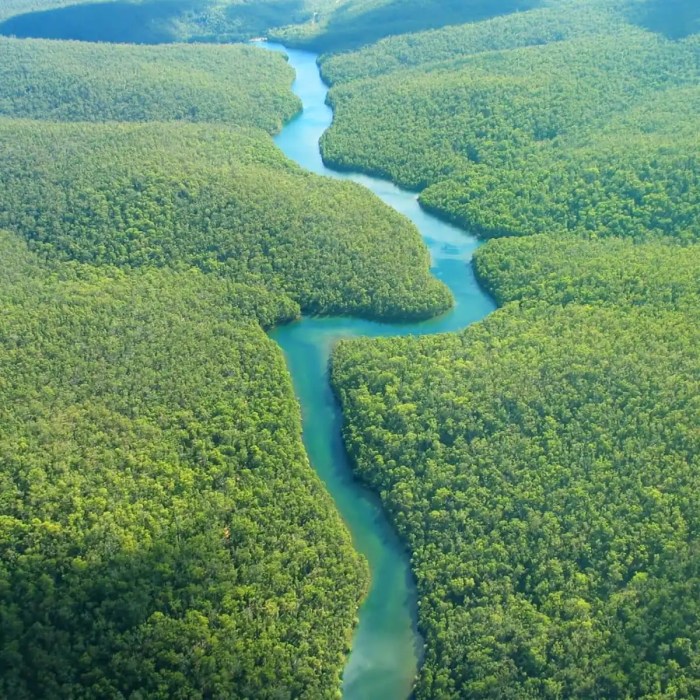
Brazil, a land of breathtaking landscapes and vibrant culture, faces unique challenges in balancing tourism’s economic benefits with environmental protection. Responsible tourism practices are crucial to ensuring the long-term preservation of Brazil’s natural and cultural heritage for future generations. By adopting sustainable strategies, tourists can minimize their impact and contribute to the well-being of local communities and ecosystems.Sustainable tourism is not just about reducing your footprint; it’s about respecting the environment, local cultures, and the communities that inhabit them.
It’s a conscious effort to travel in a way that fosters positive change, rather than simply enjoying the destination. This involves understanding local regulations, respecting traditions, and supporting businesses that prioritize sustainability.
Minimizing Environmental Impact
To minimize your environmental impact during your Brazilian adventure, consider these practical steps. Travel light, reducing the weight of luggage and the carbon emissions associated with transport. Choose accommodations with demonstrably sustainable practices, such as those utilizing renewable energy sources and minimizing water consumption. Embrace responsible waste management, properly disposing of trash and participating in recycling programs wherever available.
Respect wildlife and natural environments, staying on marked trails and avoiding disturbing animals or their habitats. Avoid single-use plastics and opt for reusable alternatives whenever possible.
Eco-Friendly Accommodations and Activities
Many accommodations in Brazil are embracing sustainable practices. Look for eco-lodges, hotels with certifications like LEED, or properties that prioritize renewable energy and water conservation. These establishments often offer a range of sustainable activities. Consider staying at eco-lodges in the Amazon rainforest, where responsible tourism practices are vital for preserving the delicate ecosystem. Engage in guided ecotours to learn about local flora and fauna, supporting local guides and businesses that prioritize environmental awareness.
Support local artisans and craftspeople, directly contributing to their livelihoods and promoting cultural preservation. Choose tours and activities that prioritize minimal environmental impact, like hiking or kayaking, instead of those relying on noisy or polluting transportation.
Local Environmental Concerns and Regulations
Brazil faces significant environmental concerns, including deforestation in the Amazon rainforest, illegal wildlife trafficking, and pollution. Local regulations aim to protect natural resources and cultural heritage. It is essential to research and understand the local regulations and guidelines before visiting specific locations. Be mindful of regulations regarding wildlife viewing and interactions. Adhere to local rules and regulations, as they are designed to safeguard the environment and local communities.
Understanding these regulations will help you respect the environment and avoid any unwanted consequences.
Sustainable Transportation Options
Sustainable transportation options are becoming increasingly important in Brazil. Consider using public transportation, cycling, or walking whenever possible. Support local transportation providers that offer eco-friendly options, such as electric taxis or bus services. If you choose to rent a car, consider vehicles with fuel-efficient engines or electric options, where available. By opting for sustainable transportation, you can minimize your carbon footprint and reduce air pollution.
Research and select transportation providers that prioritize environmentally friendly practices.
Illustrative Examples of Destinations
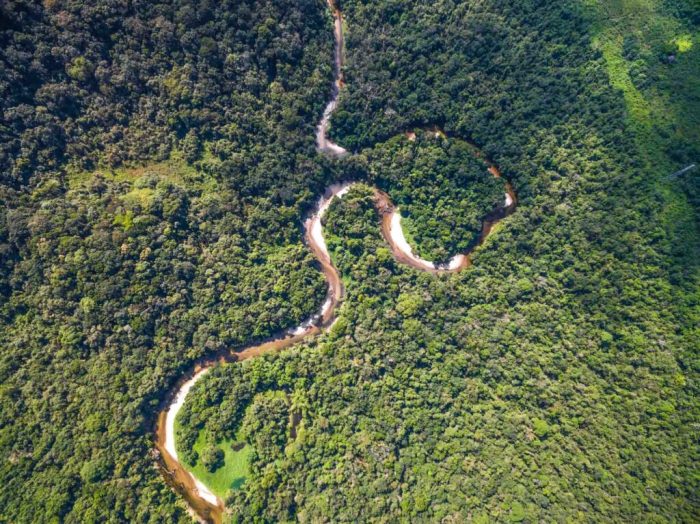
Brazil boasts a diverse range of captivating destinations, from sun-drenched beaches to lush rainforests, each offering unique experiences. Exploring these diverse landscapes provides a window into the country’s rich history, vibrant culture, and stunning natural beauty. Understanding the specific characteristics of these locations allows travelers to plan more meaningful and enriching trips.
A Tropical Beach Paradise: Jericoacoara
Jericoacoara, a charming beach town in the state of Ceará, is renowned for its pristine beaches, vibrant atmosphere, and laid-back vibe. The white sands meet the turquoise waters, creating a breathtaking spectacle. The unique geography of the region, characterized by sand dunes and the Jijoca River, offers opportunities for unique experiences, including camel riding, quad biking, and horseback riding.
The local culture is warm and welcoming, fostering a sense of community among visitors and locals alike.
“Jericoacoara’s beauty lies not only in its stunning scenery but also in the genuine hospitality of its people. It’s a place where time seems to slow down, allowing visitors to truly connect with the natural world.”
A Historical Gem: Ouro Preto
Ouro Preto, a UNESCO World Heritage Site in Minas Gerais, is a captivating destination steeped in history. Established during the colonial period, the city’s architecture is a testament to its rich past. Colorful colonial buildings, intricate gold-plated churches, and cobblestone streets create a charming ambiance. The city’s historical significance stems from its role in Brazil’s gold rush, and it retains a captivating aura that draws visitors from around the globe.
The historic buildings display a remarkable blend of European and indigenous architectural styles.
“The intricate details of Ouro Preto’s colonial architecture whisper tales of a bygone era, making it a living museum of Brazil’s history.”
An Adventure Seeker’s Dream: Chapada dos Veadeiros
Chapada dos Veadeiros National Park, in the state of Goiás, is an adventure haven. The park’s unique landscape features soaring mesas, deep canyons, and crystal-clear waterfalls. The area is perfect for hiking, rock climbing, rappelling, and exploring hidden lagoons. The diverse flora and fauna contribute to the park’s rich biodiversity. The region’s challenging terrain, coupled with the unique ecosystem, make it an ideal destination for those seeking thrilling adventures.
“The untouched beauty of Chapada dos Veadeiros invites exploration and discovery. The park’s diverse terrain offers something for every adventurous spirit.”
A Biodiversity Hotspot: Amazon Rainforest
The Amazon rainforest, a vast expanse of biodiversity, is a truly remarkable natural wonder. Home to countless species of plants and animals, the rainforest plays a vital role in maintaining the global ecosystem. The region’s dense vegetation, towering trees, and vibrant wildlife create a unique and awe-inspiring experience. Exploring the Amazon involves navigating the intricate network of rivers and experiencing the rich tapestry of life within the rainforest.
It is a place of profound ecological importance, vital for preserving the Earth’s biodiversity.
“The Amazon rainforest is a testament to nature’s artistry, a place where the symphony of life unfolds in all its magnificent complexity. Protecting this ecosystem is essential for safeguarding the planet’s future.”
Last Recap
In conclusion, Brazil offers an incredible range of experiences for travelers seeking adventure, relaxation, or cultural immersion. From the iconic beaches of Rio to the historical heart of Salvador, and the Amazon’s breathtaking biodiversity, this guide provides a starting point for your Brazilian adventure. Remember to plan ahead, be respectful of local customs, and consider sustainable tourism practices.
Your Brazilian adventure awaits!
